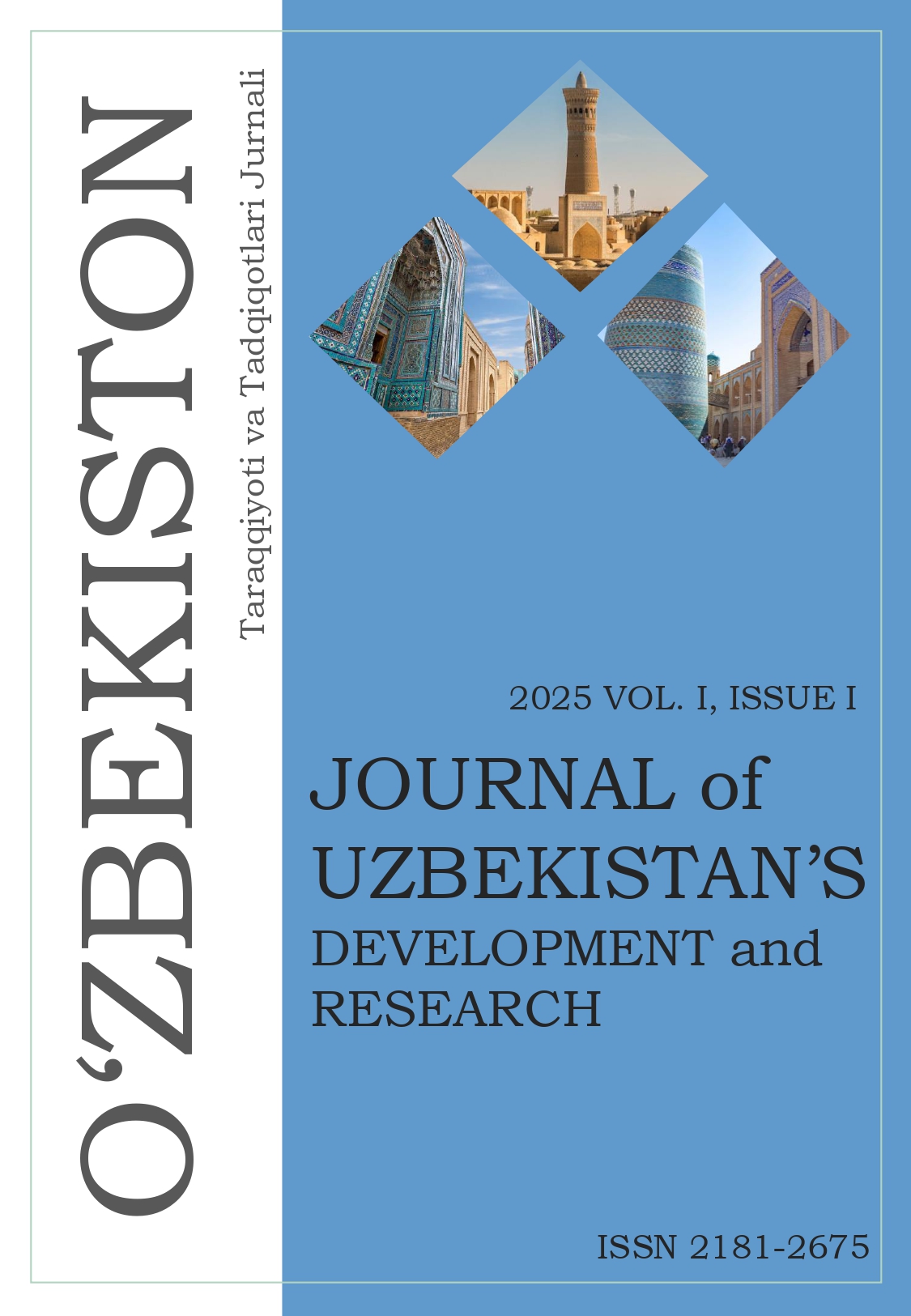THE HERITAGE OF THE STEPPE: KARAKALPAK CHILDREN'S FOLKLORE
Keywords:
Child folklore, lullabies, poetry, children’s games, songs , question-and-answer.Abstract
This article examines Karakalpak children's folklore, focusing on lullabies, songs, and games. It explores lullabies as expressions of maternal love and cultural values, while also analyzing the educational and developmental roles of songs and rhymes. The study highlights the unique characteristics of these traditions, their historical context, and their contribution to language skills and cognitive growth. The research underscores the lasting importance of this folklore in cultural preservation and children's development.
References
1. Graves, Robert. (1948.)The White Goddess:A Historical Grammar of Poetic Myth. Farrar, Straus and Giroux, 144pp.
2. Lopez Tamés, R. (1990). Introducción a la literatura infantil (Introduction to Children's Literature). Murcia: Universidad, Secretariado de Publicaciones.17pp.
3. Sutton-Smith, Brian. (2005.) "The Ambiguity of Play." In The Folklore of Childhood, edited by James M. Jones, Routledge, 55pp
4. Ma'mbetov.K., Jaqsi'mova.G., Nietova.R. (2013) “A'debiyat” pp 41-44 . 652s
5. Aymbetov K.(1965) “Karakalpak national storytellers”. Tashkent
6. Mаmedov.N. (2007) Karаkalpаk literature T 200. pp 57-66
7. Amirlаn S.E “The issue of traditional children's folklore is in N.Dawqaraev’s consideration.” (2016) Вестник №1. Nukus
8. N. Dawqаraev. (1977)“Complete collection of works” 2-part. Nukus, 114-116pp
Published
Issue
Section
License
Copyright (c) 2024 Bazarbaeva Miyassar (Author)

This work is licensed under a Creative Commons Attribution-NonCommercial-NoDerivatives 4.0 International License.
All Rights Reserved.





